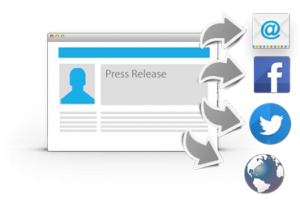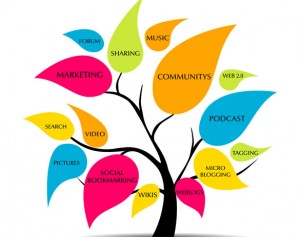Six Simple Steps for Creating a Content Marketing Strategy
 Every company needs an effective content marketing strategy to stay competitive. The popularity of search engines and social media networking has completely changed the way consumers research their buying decisions. Over 90% of American adults now use the internet to find information and research their purchases.
Every company needs an effective content marketing strategy to stay competitive. The popularity of search engines and social media networking has completely changed the way consumers research their buying decisions. Over 90% of American adults now use the internet to find information and research their purchases.
Since most consumers are searching online for solutions to their problems, businesses must provide them with useful answers to their inquiries. Relevant and informative content is now an essential component for every online marketing strategy. A company must establish themselves as a credible expert in their field to encourage followers and build relationships.
Here are six simple steps for creating a content marketing strategy:
1. Research Target Audience
The first step in any content marketing strategy should be extensive research. Marketing automation software will allow you to track and profile your existing customers and potential leads. This information is necessary for both content development and content marketing.
2. Find Your Editorial Voice
Online followers will expect an unbiased and articulate editorial voice that offers them real value and consistency. If you are not a talented content writer, it is best to outsource it to one particular person. Try to find someone who has experience writing in your field whenever possible, although most skilled freelance writers can adapt their talent to any industry.
3. Answer Leads Questions
Use the content as an opportunity to answer the questions that your leads would typically ask. For example, if you sell an herbal weight loss supplement, write several different articles addressing a variety of ways to losing weight. You can mention your herbal supplement as one of the suggested weight loss solutions. Target the message towards solving the lead’s need, not necessarily your particular solution to their problem.
4. Create a Content Distribution Strategy
There are countless different websites and social networks where you can promote and post your content for free. It is essential that you know which sites your specific target audience is visiting and which content strategies will work best on those sites. A specific article may attract attention on Google+, but it could be completed ignored on Facebook. If you are not social media savvy, you can either research and learn from successful competitor’s social media sites or consult a social media expert for guidance.
5. Build Relationships in Your Field
It is important to connect and build relationships with as many online authorities in your industry as possible. You can cross-promote each other’s content, which will help both your SEO and content marketing strategies.
6. Mix Up Content with Images & Videos
Your content marketing strategy should contain more than just informative articles and compelling statuses. It needs something to make people stop in their tracks. A powerful image or an entertaining video are both great ways to get noticed.
All it takes is these six simple steps to success and you can create a content marketing strategy that is guaranteed to generate results. If you are unsure how to get the most from these strategies, please ask the experts at Lead Liaison for help. They will create a comprehensive, customized online marketing strategy geared towards optimal exposure and superior results.










